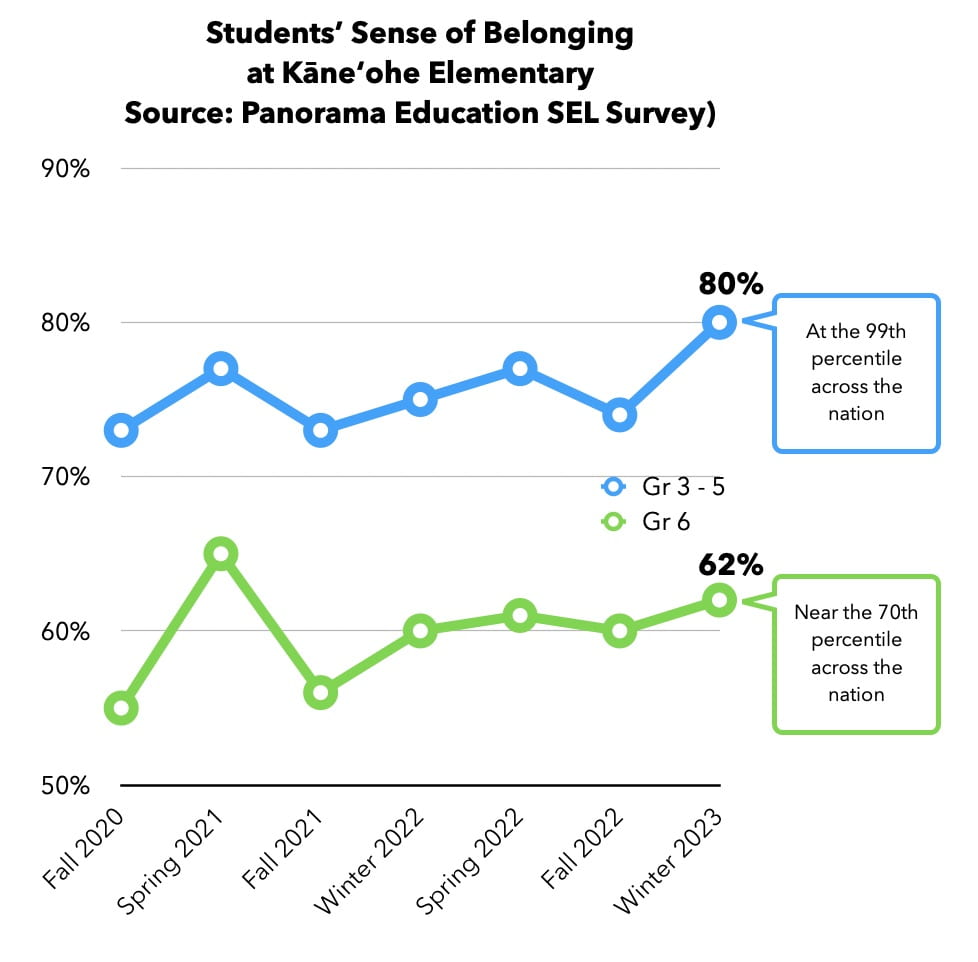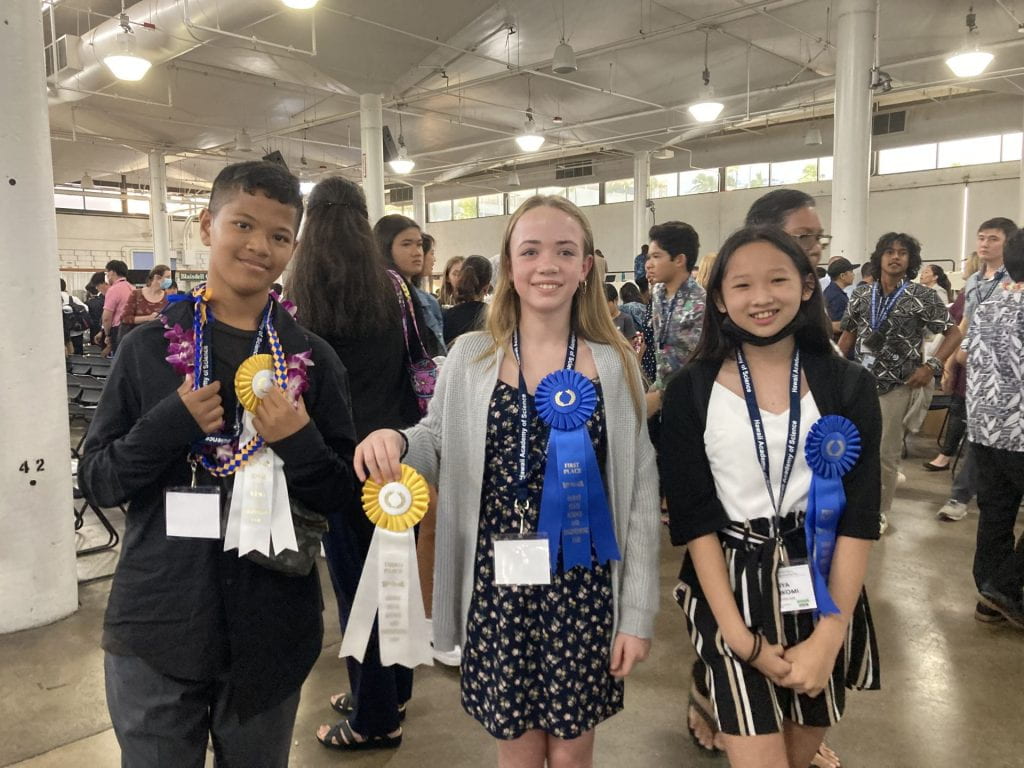ALOHA FOCUS FOR THE WEEK: ʻOLUʻOLU
Redup. of ʻolu; pleasant, nice, amiable, satisfied, contented, happy, affable, agreeable, congenial, cordial, gracious; please. (Pukui-Elbert)
Good natured; not easily provoked; good humored as applied to a nature of ease and cheerfulness. (Parker)
Since 2003, public middle school students (grades 6 – 8) across Hawaiʻi respond to a biennial survey tracks “health-risk behaviors that contribute to the leading causes of death and disability among youth and young adults.” The survey covers topics ranging from smoking to drug use; mental health to sexual behaviors; as well as protective factors that promote healthy choices.
Compared to 2019, the latest survey results recorded in 2021 features several bright spots. For one, cigarette smoking continues to be on a downward trend, dropping from 10.5% to 7.1%. Further, there was a sharp decrease in vaping as well, from 30.6% to 12.8%.
Interestingly, students reporting that they “Did not go to school because they were sick in the past 30 days” significantly decreased from 53.1% in the pre-COVID year of 2019 to 37.4%.
Sadly, the amount of students that reported feeling despair so deep it kept them from participating in regular activities has risen, increasing from 30.5% to 34.4%. Further, more than half of them, 53.6%, never or rarely got the kind of help they needed. Unfortunately, this is part of an alarming trend for the nation’s youth that has been on an incline for the past 10 years. Keeping kids from attending school in-person and other traumatic affects of the pandemic only exacerbated this situation. While schools were able to keep students learning from a distance, many students suffered from being physically disconnected from their peers and teachers. Studies emerging from this period indicate increased depression and anxiety stemming from distance learning.
For Kāneʻohe Elementary, we monitor our students’ social-emotional wellbeing through the Panorama SEL survey which is conducted three-times-a-year. Based on the results of this survey, I am happy to announce that our students are making good progress. For example, during the Fall of 2020, as we transitioned from distance learning to being partially on-campus, 47% of our 3rd-5th graders and 45% of our 6th graders reported being able to regulate their emotions, which includes controlling their emotions when needed, remaining calm when things are going wrong and staying relaxed while everyone around is angry – in other words, being ʻoluʻolu. At that time, our students reflected the overall mood of the nation.
This past winter, when asked the same set of questions, 58% of our 3rd-5th graders and 52% of our 6th graders reported positively, respectively placing them at the 99th and 80th percentile across the nation. While we strive to have 100% of students showing ʻoluʻolu, I believe we are making good progress.

In large part this is due to promoting “protective factors” here on campus, especially in building connections –lokahi– to caring adults and teaching students to build positive relationships. One the key areas we look at to measure this is students’ sense of belonging which asks about whether they feel understood, respected and supported. From a low of 73% for 3rd-5th graders and 55% for 6th graders in the Fall of 2020, 80% of our 3rd-5th graders and 62% for 6th graders now report feeling like they belong.

Credit for this improvement can be attributed to a broad range of efforts from our teachers, support staff, parents, families, community partners, kupuna in our neighborhood, and our students themselves. All have focused on improving learning outcomes and fostering a culture of aloha.
Pono Shim frequently paraphrased Aunty Pilahi Paki’s prophecy regarding Hawaiʻi’s future stating:
“In the 21st century, the world will search for peace and they’ll look to Hawaiʻi because Hawaiʻi has the key and that key is ALOHA.”
To become more ʻOLUʻOLU,
- Develop positive connections;
- Practice empathy;
- Help others;
- Embrace your choices (mistakes, failures and successes) as lessons;
- Make self-care (eating healthy foods, exercising, get a good night’s sleep) a daily habit; and
- Maintain a hopeful outlook.
5 PURSUITS of ʻOLUʻOLU:
Inspired by Gholdy Muhammad
Please watch this: The Hugging Tree by Jill Neimark and illustrated by Nicole Wong. Then with you child, answer the following:
IDENTITY: Interview a family member about a challenge your kupuna faced. Who and what helped them to be resilient?
SKILLS: What is the main problem the tree faces in the story and who does the tree turn to for help?
INTELLECT: Learn about the ʻōlulu, an endemic plant in Hawaiʻi once found on the cliffs of Kauaʻi, but now is presumed to be extinct in the wild. It survives due to help received from humans.
CRITICALITY: When times are hard and we face challenges, we need to be strong. Can we be strong alone, or do we need help from others? How do we seek help from others, and why do they help us? (source)
JOY: Write and draw a thank you card to someone who helped you through a difficult challenge.
HOʻOMAIKAʻI: Hawaiʻi State Science and Engineering Fair Winners
Congratulations to our students for placing 1st and 3rd in their respective categories, beating out 7th and 8th graders from public and private schools across the state! For Engineering Technology, Mia Stringfield and Miya Karikomi took the top prize. Eleu Ceria, Logan Belluomini, and Violet Koida followed strong bringing home the bronze. Mahalo nui loa to their teachers (Mrs. Almeida, Ms. Bruecher, Mrs. Morton, and Kumu Sarah) who prepared and encouraged these students for this major competition.

UPCOMING EVENTS
| Tue, Apr 11, 2023, 6 – 7 PM | KES Ohana Mtg – in-person at the KES Library or via Zoom |
| Sat, Apr 22, 2023 | Rainbow Keiki Run |
| Sat, May 13, 2023 | Campus Beautification #2 |
| Apr 25 – May 19, 2023 | Smarter Balance Testing at Kāneʻohe Elementary |